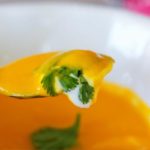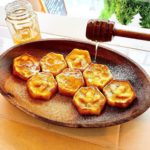Unsalted Butter

Unsalted butter, or sweet butter, is commonly used in baking cookies, cakes, and pastries. It has a subtle sweet taste and a delicate aroma as it contains no salt. Popular brands include Anchor and President.
Salted Butter

Salted butter has a salty taste and a longer shelf life due to the presence of salt in its composition. It is not ideal for baking sweet treats as it can alter the flavor profile. Instead, it is commonly used as a condiment in cooking and can be added to soups or stir-fries.
Margarine

Margarine is made from vegetable oils, such as corn, soybean, and palm oil. It is commonly used for cooking, frying, and spreading but less so in baking, as the beneficial fats can turn into saturated fats at high temperatures. Well-known brands include Tuong An and Meizan.
Animal Butter

Animal butter is derived from natural sources, mainly cow’s milk. In countries like Australia and New Zealand, butter is also made from sheep and goat’s milk. It is widely used in baking, offering better flavor and aroma than margarine. Popular brands include Anchor, President, and Sunflower.
Shortening

Shortening is 100% fat, a combination of lard and hydrogenated vegetable oil. It is opaque white and contains no water, so it doesn’t melt at room temperature like other types of butter. Shortening is used to create softer, more flexible baked goods and to stabilize structures (such as in pie crusts, cookies, and puff pastry). It can also be used for frying and cooking, offering a longer shelf life.
Tips for Choosing Butter

– For buttercream recipes, President or Anchor butter is the best choice to achieve a naturally beautiful white color without altering the hue.
– To make crispy and fragrant cookies, opt for President or Anchor butter.
– For non-stick pans and molds, or for making sweets that don’t require leavening, such as nama chocolate and muffins, Fieder butter is a good option.
Storage Tips

– For optimal butter storage, wrap it tightly and keep it in the refrigerator. Salted butter can be stored for up to 5-6 months, while unsalted butter has a shorter shelf life of about 3 months.
– Shortening should be stored in a cool, dry place as it will harden if refrigerated. It has a long shelf life of about 2 years from production and 6 months after opening.
We hope that with this information, you can now choose the right type of butter for your baking needs. Stay tuned for more cooking tips and tricks!
For more interesting reads, check out our “Cooking Secrets” section.
Cook the Perfect Carrot Soup for Babies That Moms Will Love – Ready in No Time!
The recently released GREEN Electric Machine pressure cooker will help mothers cook carrot soup and provide their children with the nutrients they need to keep their eyes healthy. The pressure cooker will make it easier to whip up this nutritious snack that can provide kids with vitamin A supplements for improved vision.
The GREEN Electric Machine pressure cooker has just been unveiled, providing mothers with a convenient way to prepare carrot soup for their children. This healthful snack can give kids the vitamin A supplements they need to prevent eye diseases, promote healthy eyesight, and enjoy a delicious meal.
Unbelievable! Discover What Else You Can Put in Your Coffee
Are you looking for a new way to add flavor to your cup of coffee? Try stirring in a pinch of salt, grinding up some eggshells, adding a dash of chocolate, blending with coconut oil and butter, or sprinkling some ginger in your mug! Experience a unique and delicious twist to your everyday coffee routine.



































